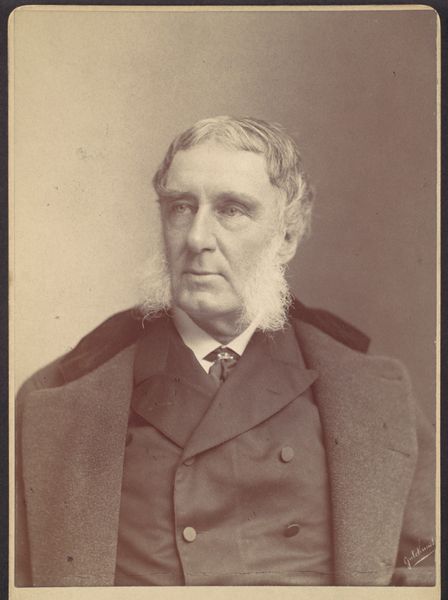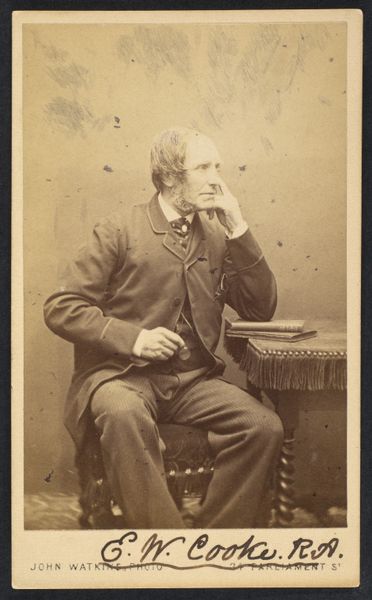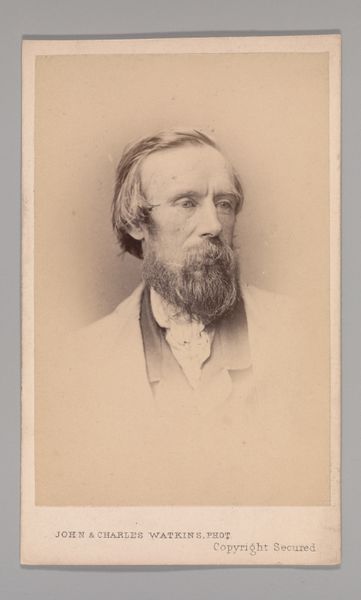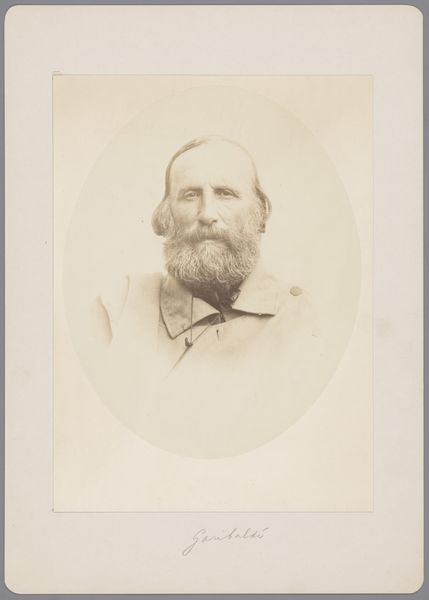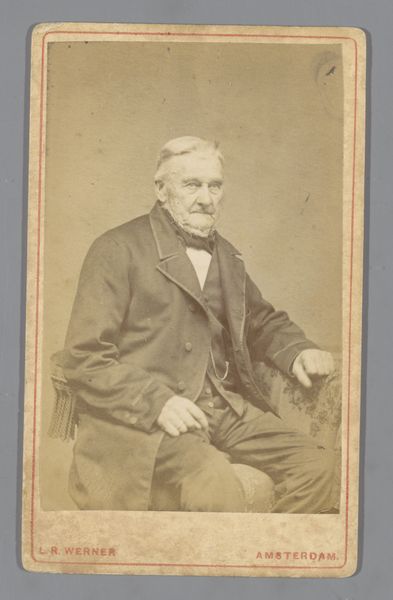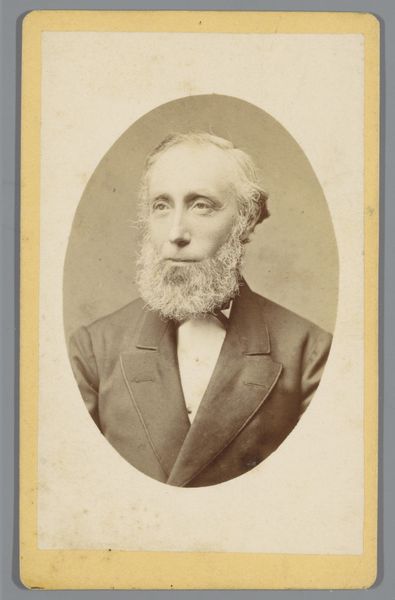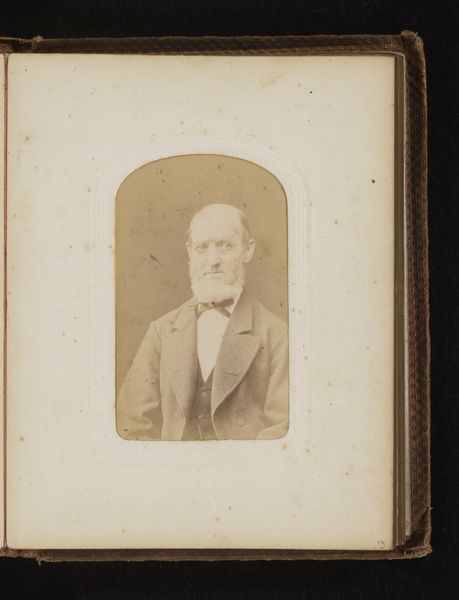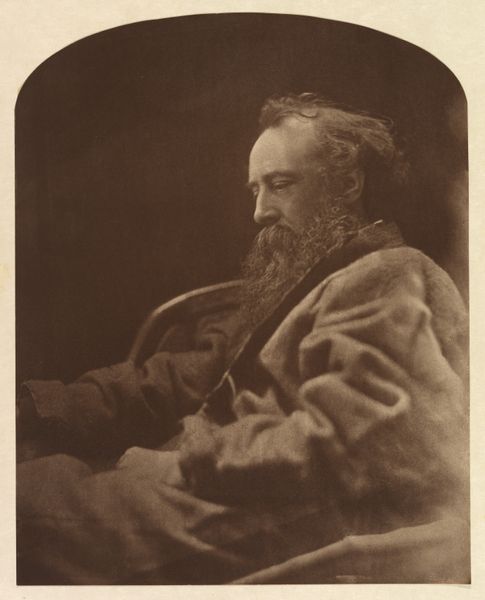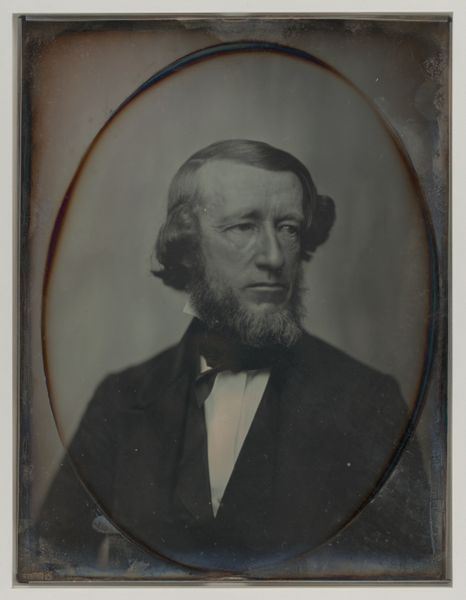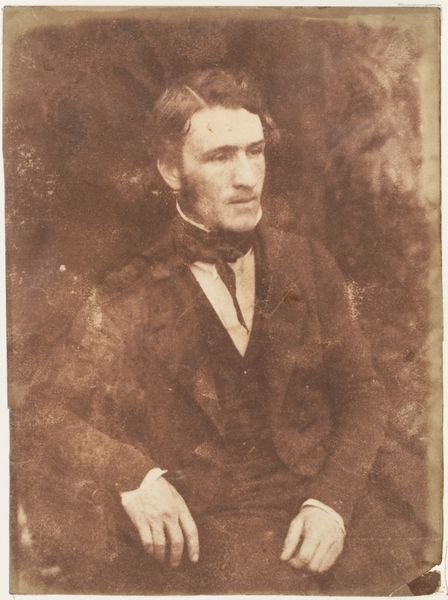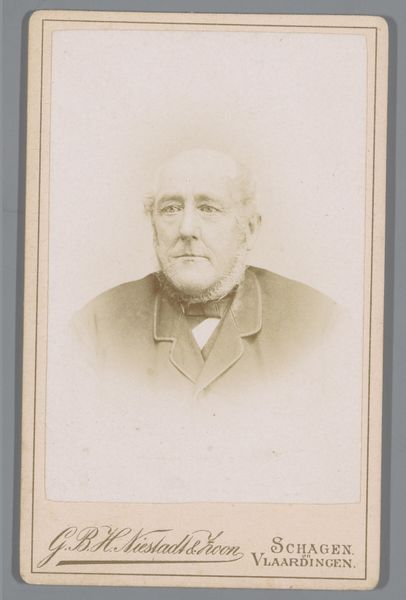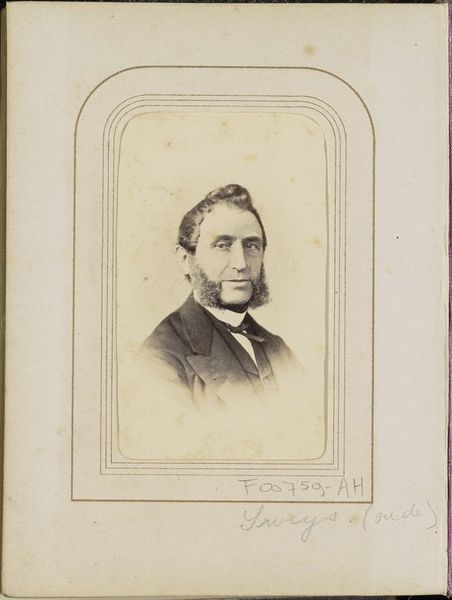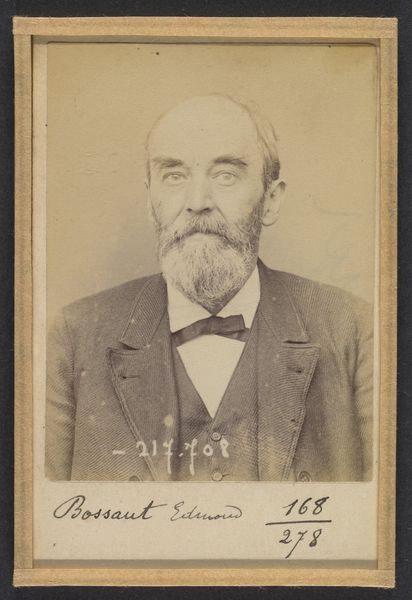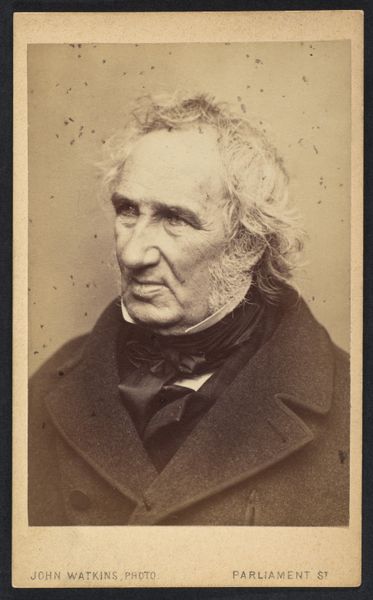
silver, print, photography, albumen-print
#
portrait
#
16_19th-century
#
silver
#
photo restoration
# print
#
photography
#
england
#
albumen-print
Dimensions: 25 × 21 cm (image/paper); 47.5 × 32.7 cm (mount)
Copyright: Public Domain
Curator: Before us, we have Julia Margaret Cameron’s "Unknown Man," an albumen print created between 1864 and 1866, now residing here at the Art Institute of Chicago. What are your initial thoughts? Editor: Immediately, I'm struck by a sense of quiet dignity and perhaps a trace of melancholy. The soft focus gives him an ethereal quality, almost like a figure from a dream or a half-remembered historical account. Curator: Absolutely. Cameron’s photographic work, particularly her portraits, was often challenging the Victorian social norms. Her sitters were frequently intellectuals or members of her social circle, which enabled an engagement challenging strict conventions of her era, and promoting artistic vision, against say a record of society's upper crust. The title of "Unknown Man," suggests an egalitarian sentiment that, even unnamed, he is worthy of observation and examination. Editor: I am fascinated by how the artist manipulates the Victorian visual lexicon. The light catching the gentleman's face, particularly around his brow and cheek, speaks to classical portraiture but with Cameron's deliberate use of soft focus, one questions not merely who the man is, but the truth and validity of a portrait in that era, too. Curator: I see your point. Cameron consciously utilized the soft focus as a way to explore the psychological interior of her subjects, something rarely seen. In the mid-19th century photography was already starting to shift access to representation, but was mostly seen as either cheap or highly stylized by artists such as Ingres. Cameron seems to challenge these conceptions. This particular "Unknown Man," is perhaps intended as a counterpoint, inviting the viewer to question notions of class and legacy. Editor: And it’s quite an invitation, because of the beard and clothing this Unknown Man evokes power structures, but that manipulation also complicates readings of patriarchy or power. His serious look and his ornate sideburns give a sensation of importance while the blurring obscures such power. The portrait does not settle upon any meaning. Curator: And through his simple existence as a face we ponder his moment in Victorian England, one of class, status, visibility. Editor: And one of enduring mystery and compelling beauty, really! The choice to leave him unnamed, makes you wonder how many faces have gone missing from our histories because nobody marked them.
Comments
No comments
Be the first to comment and join the conversation on the ultimate creative platform.
